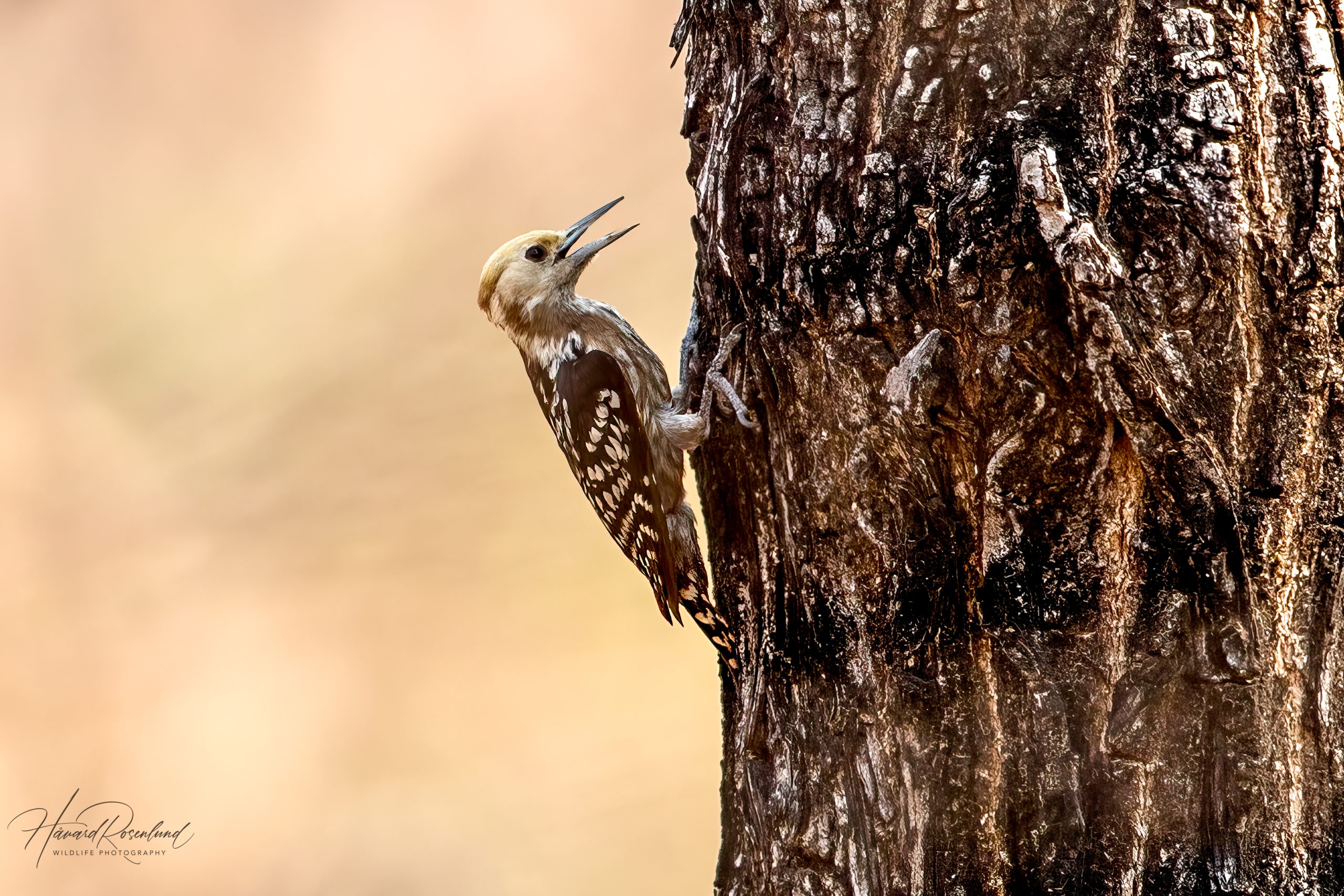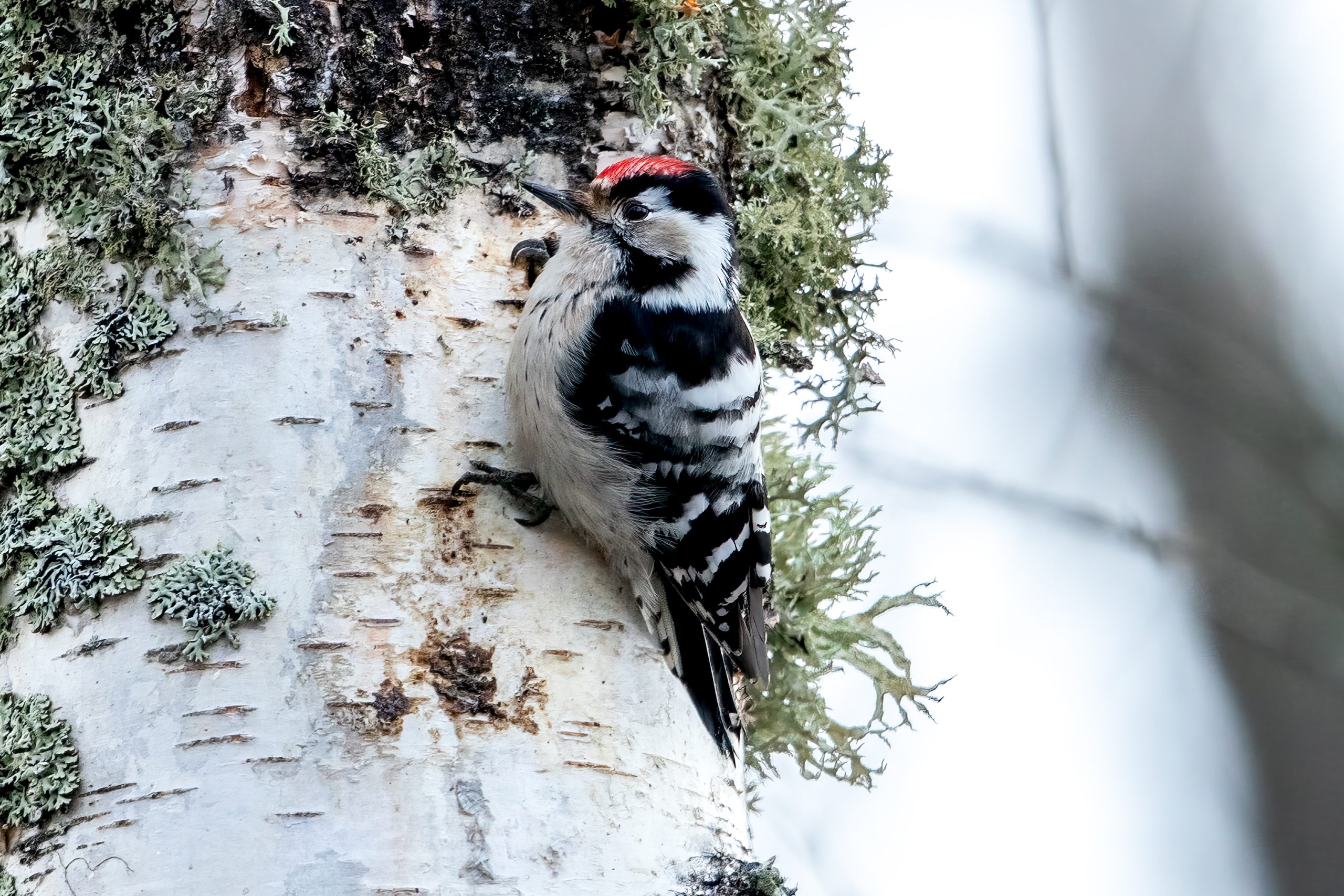Yellow-crowned Woodpecker
(Leiopicus mahrattensis)
Description
The yellow-crowned woodpecker (Leiopicus mahrattensis) is a woodpecker found across a range of countries in South and Southeast Asia. This species is typically around 17-18 cm (6.7-7.1 in) in length, making it relatively small compared to other woodpeckers. It is characterized by its black and white patterned plumage, with a distinct yellow forecrown that turns red towards the nape on males. Females lacks the red coloration and have an all-yellow crown. Both sexes have a white underparts with brown streaks and a red-orange belly-center. It has a relatively short bill and exhibits the stiff tail feathers typical of woodpeckers, which assist in climbing tree trunks.
Diet & habitat
The yellow-crowned woodpecker primarily inhabits dry deciduous forests, open woodlands, and scrublands. It is often found in areas with a mixture of trees and open spaces, where it can forage for its primary diet of insects. This species is an adept forager, using its strong bill to peck at tree bark in search of ants, beetles, and larvae. It may also feed on fruits and seeds, particularly in the dry season when insect prey is less abundant.
The bird is often observed in pairs or small family groups, and its feeding behavior includes both pecking at wood and gleaning insects from leaves and branches. It is known for its distinctive, rhythmic drumming on tree trunks, which serves both as a feeding method and a communication signal.
Nesting
The breeding season of the yellow-crowned woodpecker typically occurs from February to July, although this can vary slightly depending on the region. During this time, the male performs courtship displays that include drumming and calling to attract a mate. The species is monogamous, with pairs working together to excavate a nest cavity in the trunk or branch of a tree.
The female lays 3–4 white eggs, which are incubated by both parents for about 11–14 days. After hatching, the chicks are altricial, meaning they are born blind and featherless, requiring significant parental care. Both parents are involved in feeding the chicks by regurgitating food. The young woodpeckers fledge at around 20–25 days old but may remain dependent on the parents for some time afterward.
Status
The yellow-crowned woodpecker is classified as least concern by the IUCN Red List, indicating that it is not at immediate risk of extinction. However, like many forest-dwelling species, it faces potential threats from habitat loss due to deforestation and land-use changes. In some areas, the degradation of dry forests and woodlands could pose a future risk if these trends continue.







